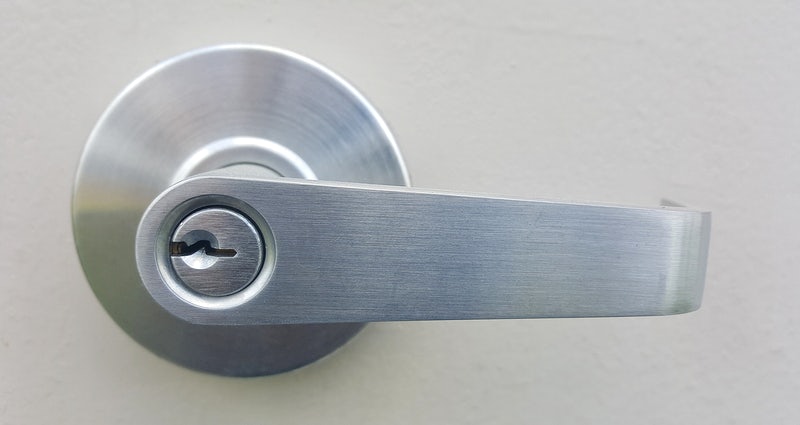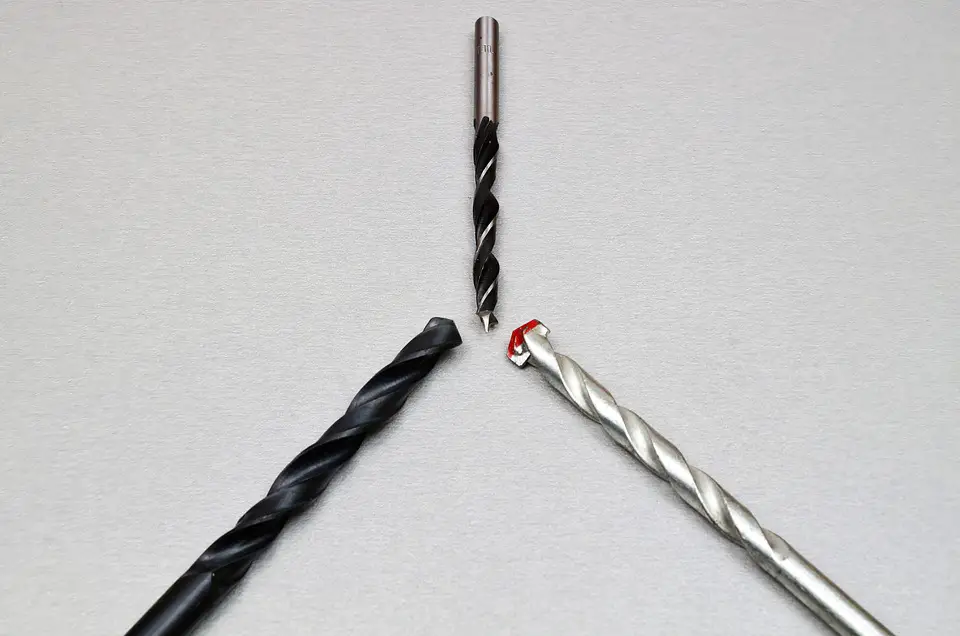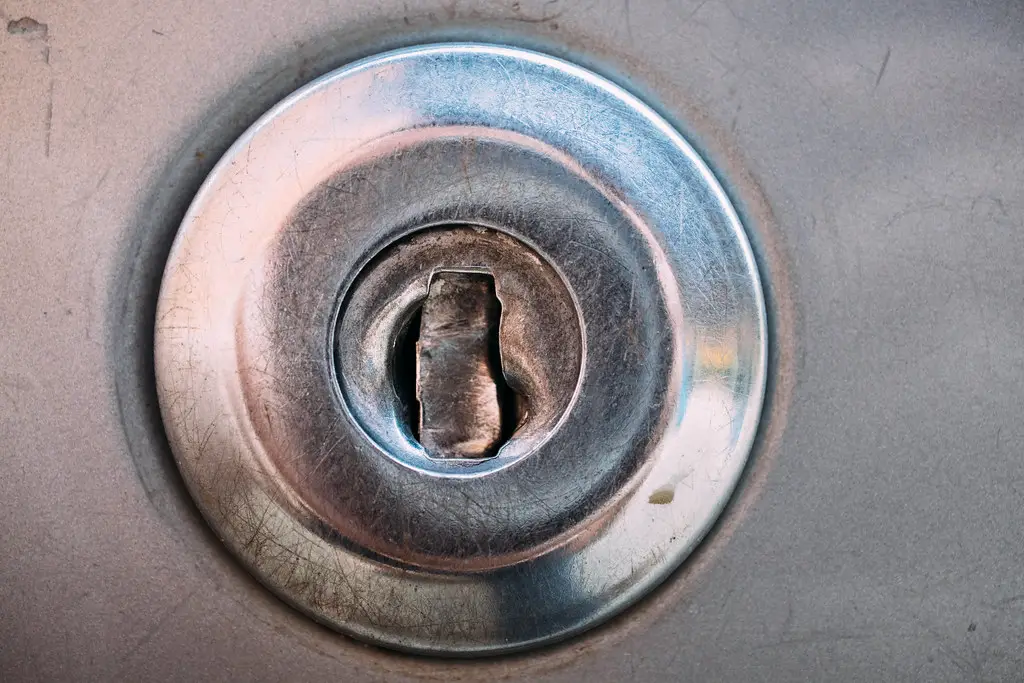There are a couple of techniques to get through a locked door, like using an improvised key, removing the hinge, or doorknob. But when all those methods fail, you’ll have to resort to the last one: drilling.
Though it’s not the best option, drilling will cost you less than smashing the door. If that’s the case, or you just want to learn the technique to troubleshoot problems in the future, we’ll boil it down to a brief, straightforward walkthrough.
How to drill out a lock? Note these six no-fuss steps down:
- Hammer a guidance point
- Start drilling
- Apply consistent pressure
- Drill a bigger hole
- Insert a screwdriver
- Break the lock mechanism
Let’s dig deeper into the process and some helpful hacks to simplify it!
How To Drill Out A Lock?
Our in-depth advice on dealing with a lock using a drill will help you successfully open it, provided you follow these instructions correctly.
Precautions Before You Start
You think about drilling when you’ve failed to adopt all the usually recommended options, as once you get through the bolt, it’ll no longer be effective.
Some locks are specifically designed to deter robbers from accessing valuable properties. There is no point attempting to break through an anti-drill lock since you’ll never succeed.
That’s why it’s necessary to understand your bolt well. Even with drilling, certain locks will not be as easy to open as others.
Without a proper understanding of the lock mechanism, drilling is counterproductive.
What You’ll Need

We suggest using a power drill with variable speeds if you’re a beginner. This tool usually comes with an adjustable grasp, making drilling versatile, particularly if you’re working with multiple bits.
Standard drill sizes available on the market are ½, ⅜, and ¼ inches. The tool’s size will be up to the bit’s size you’re going to use.
- Flathead screwdriver
Unlike other screwdrivers, flathead ones have a flat and wedged tip. They’re adept at dealing with screws featuring linear and straight notches.
DIYers commonly use them for loosening and tightening screws. The standard flathead screwdriver sizes available on the market are ⅜, ¼, ⅛, 5/16, 3/16, and 5/32 inches.
- Center punch and hammer
Hammering a center punch is critical as it provides the drilling process with indentation, deterring the tool from going off track when you’re performing the work.
You can choose from various center punch types, yet the best idea is to go for a pricking tool. This punch features a narrower and sharper top, creating an efficiently deep hole.
- Protective goggles
Protective goggles are crucial for protecting your sensitive eyes from dust or metal fillings. Even small debris could pose a temporary vision loss or eye injury.
Instructions
After ensuring to double-check every part of your pin and bolt, delve right into the following steps to complete the task successfully.
Hammer A Guidance Point

The guidance point or center punch serves as a direction for drilling a hole.
Look for the dividing or shear line between the inner and outer lock – the precise height to get through the tumblers.
Hammer a punch at the pin’s top under that line. Make 2-3 powerful taps on its end until you see a noticeable indentation.
Start Drilling
Start drilling a hole into the bolt cylinder using a ⅛-inch bit. This step will destroy the pins in the bolt, enabling you to make it open. Some locks have six tumbler pins or more, but most types include five only.
Every time you hit a pin, you’re increasing the resistance of the bit, which will feel weaker when you successfully get through each pin.
Apply Consistent Pressure
During the process, apply consistent pressure and remember to set the tool at a slow speed so you can perform an accurate and even job and avoid further damaging the bolt.
Working too fast or applying too hard pressure might destroy the bit. If you find it challenging to get through the pin, you can lubricate the bit with water or oil.
Drill a Bigger Hole

Now is the time to create a larger hole. Change to a larger tool bit size, depending on your bolt (at least ¼ inch).
Freshen the bit by adding some lubricant to the keyhole. Then, penetrate the pilot one and break more pins.
If you can’t still unlock the door after getting through this hole, try using an even more sizable tool bit and repeat the process.
Insert A Screwdriver
Put the flathead screwdriver’s blade into the keyhole and spin it like when you’re twisting a key.
After destroying the pins, inserting your flat-headed screwdriver into the created hole, and turning it in the unlocking direction, you should see the lock mechanism deactivated.
Break The Lock Mechanism
If the drilling process occurs correctly, you will succeed in opening the lock. If that’s not the case, you’ll have to destroy the entire lock cylinder.
Your cabinet, drawer, or door is now open and good to use!
Key Tips on Drilling Locks
- Apply steady, consistent pressure and set the tool at the slowest speed. You should feel resistance when a pin falls out.
- Add a lubricant, such as synthetic oil or water to freshen the tool bit and prevent it from getting stuck inside the keyhole.
- Keep the device straight. You may risk destroying other parts of the bolt if you drive it at an even slight angle.
- Avoid blowing the debris inside if you don’t want metal shards to fly to your eyes.
FAQs
The first time you encounter this problem, there will be a lot of questions and confusion about the tools needed or if drilling applies to your furniture. Our quick pieces of information below can save you some energy.
Can I Drill Out A Lock?
First, you need to check what type of lock you have. While tumbler ones are the most straightforward to get through, you may want to consider if yours comes with additional security devices.
Also, it’ll be incredibly arduous to break if your bolt includes a ball in the pin or hard steel pin.
What Bit Do I Need To Drill A Lock?
It’ll be best to go for high-setting steel bits if you’re working with metal. Yet, if the metal is soft, we recommend using an HSS one with a 118-degree point angle. For hard steel, pick ones with a 135-degree point angle.
Concerning size, you’ll need a bit of ¼ inch to produce a large hole and one of ⅛ inch to produce a small hole. These particular sizes are the most applicable to breaking a bolt’s cylinder.
Can I Drill Out a Master Lock?
It’s possible to get through a Master lock using a bit of ¼ inch. Remember to aim the tool at the mechanism’s center so that you can break the entire locking mechanism.
However, in a bad case, you might fail in opening it but even disable it from getting opened.
How Do You Remove A Lock If You Lose The Key?
- Insert a tension wrench’s short end into the keyhole as deep as possible, then twist it in the unlocking direction, just as when you twist a key.
- Insert a pick into the keyhole while turning the tension wrench in the unlocking direction.
- Move the pick forth and back, up and down
- Force the pins to the right configuration, mimicking the ridges of your keys. Keep trying after erroring.
- Hit the bolt’s pins using your pick and turn the tension wrench simultaneously until the lock also turns and opens.
Do Burglars Use Bump Keys?
A bump key is a modified key used to unlock various locks. In the past, only locksmiths used them.
But now bump keys are widely available on the Internet, which raises police’s worry since burglaries throughout the country are increasingly using them.
Sometimes, homeowners don’t even realize that someone has broken into their houses as bump keys will not leave any trace.
Which Lock Is Most Secure?
The safest, most secure kind has to be a deadbolt, which commonly appears on a house’s exterior door.
Deadbolt locks are available in either double or single-cylinder styles, rated from Grade 1 to 3 based on their strength. Grade 1 products are the best rated, providing the highest security.
Conclusion
After all, drilling is a destructive method of entry, so ensure to weigh up and exhaust other unlocking techniques before thinking about this resort.
Knowing how to drill out a lock will sometimes save you from urgent situations and your money from unnecessary services. Thank you for reading!

